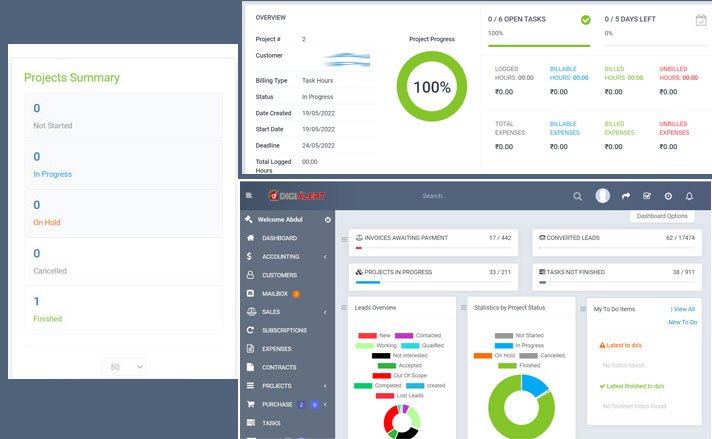Thick Client Application Penetration Testing
Thick Client Application Penetration Testing
Thick client application security refers to the measures taken to secure thick client applications, which are software programs that run on an end-user's computer or device and require a significant amount of resources and processing power. These applications often handle sensitive data and are vulnerable to various types of attacks, including malware, phishing, and hacking.
WHAT IS
Thick Client Application Penetration Testing
At digiALERT, we understand that thick client applications offer a unique set of benefits and challenges when it comes to security. One of the key advantages of thick client applications is that they run directly on the user's device, which can offer improved security for data storage and transmission. This is because the application and its data are stored locally on the device, minimizing the risk of data breaches in transit or on remote servers. Additionally, the fact that thick client applications do not rely on a server for functionality, makes them less susceptible to server-targeted attacks like DDoS. However, it is important to note that thick client applications also have their own unique security risks that need to be considered. For example, they can be vulnerable to malware or other types of attacks that target the device they are installed on. In addition, because they are installed locally, they may have more privileges and access to sensitive data, which can increase the risk of data breaches if the application is not properly secured. Our team of experts can assist in identifying and mitigating these risks, to ensure that your thick client applications are secure.
Speak to an expert
key features
Thick Client Application Penetration Testing
Types of
Thick Client Application Penetration Testing
At digiALERT, we specialize in thick client application security, including:
- Static Analysis: Our experts use advanced tools to analyze the source code of the application without executing it, to identify potential vulnerabilities and weaknesses.
- Dynamic Analysis: Our experts execute the application and analyze its behavior while it is running to identify any vulnerabilities or weaknesses in the application's functionality.
- Penetration Testing: We simulate a real-world attack on the application to identify and exploit vulnerabilities, providing a thorough assessment of the application's security posture.
- Network Traffic Analysis: Our experts monitor and analyze network traffic to identify and mitigate potential security risks. Security Code Review: Our team of experts review the code of the application for security vulnerabilities, identifying any potential issues and providing recommendations for addressing them.
- Configuration Review: Our team of experts review the configuration of the application and recommend changes to improve the overall security of the application.
Statistics on
Thick Client Application Penetration Testing
Speak to an expert
How do we do
Thick Client Application Penetration Testing
- Identifying thick client applications: We identify all thick client applications in use within the organization to ensure that all potential vulnerabilities are identified.
- Vulnerability assessment: We conduct a thorough assessment of each thick client application, identifying all potential vulnerabilities and determining the attack surface. We use a variety of techniques such as manual testing, static analysis, and dynamic analysis.
- Risk evaluation: We evaluate the risk level of each vulnerability, prioritizing the most critical issues to be addressed first.
- Remediation: We implement measures to secure the thick client applications by patching vulnerabilities, implementing secure coding practices, and implementing runtime protection measures.
- Monitoring: To ensure ongoing protection, we continuously monitor and test the security of the thick client applications.
WHY THICK CLIENT APPLICATION PENETRATION TESTING
WHO NEEDS THICK CLIENT APPLICATION PENETRATION TESTING
Thick client application security is important for organizations that use thick client applications as a primary means of accessing and storing sensitive data. These types of applications are commonly used in enterprise environments to manage sensitive data and critical business processes, such as financial transactions, customer relationship management, and supply chain management.
These applications, which are typically installed on individual devices, can be vulnerable to various types of cyber threats such as malware, ransomware, and phishing attacks. By conducting a thick client application security assessment, organizations can identify and mitigate potential vulnerabilities in their applications, protecting their data, It can also help ensure compliance with relevant laws, regulations, and industry standards. and maintaining the confidentiality and integrity of their systems.
How often is Thick Client Application Penetration Testing recommended
When it would be performed
It is generally recommended to perform thick client application security testing on a regular basis, particularly when
- new versions or updates of the application are released
- there are significant changes to the infrastructure or environment in which the application is deployed.
This can help ensure that any vulnerabilities or weaknesses in the application are identified and addressed in a timely manner, reducing the risk of a security breach or other incident. It is also important to consider the potential impact of any vulnerabilities found, as well as the potential consequences of a security breach, when determining the frequency of testing.
Speak to an expert
How are we
unique
- We use specialized software to analyze the application for potential security issues, rather than using manual methods.
- We provide a detailed analysis of the application, including an in-depth review of the code, to ensure that any potential security risks are identified and addressed before deployment.
- We use advanced methods to detect potential vulnerabilities and protect the application from malicious code.
- We test the application for compliance with security standards and regulations.
- We provide ongoing monitoring and support to ensure that the application remains secure.
- We use machine learning and artificial intelligence to identify new security threats and address them quickly.
- We provide secure authentication methods and encryption technologies to protect the application and its data.
- We use advanced security technologies such as application firewalls and intrusion detection systems to protect against malicious attacks.
- We provide secure storage solutions to protect the application’s data.
- We provide comprehensive training and support to ensure that the application is used securely and safely.













 ISO/IEC 27001:2022
ISO/IEC 27001:2022 ISO/IEC 20543:2019
ISO/IEC 20543:2019 ISO/IEC/IEEE 29119-5:2024
ISO/IEC/IEEE 29119-5:2024 CSA Certificate
CSA Certificate Incorporation
Incorporation Makeinindia
Makeinindia Authorized partner
Authorized partner MSME Chennai
MSME Chennai digiALERT Tan
digiALERT Tan GST Chennai
GST Chennai Pancard
Pancard Amended GST
Amended GST